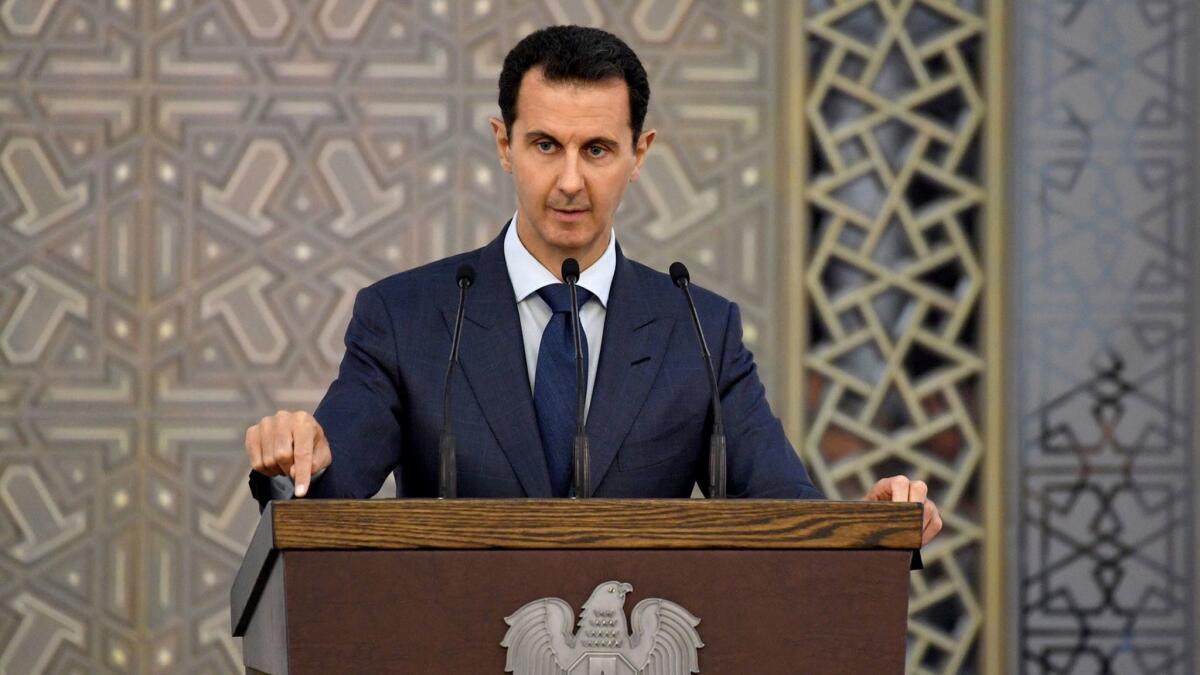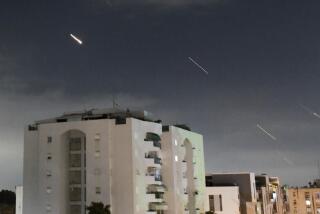Syria may be in ruins, but it looks like Assad ‘has won the war militarily’
Reporting from Amman, Jordan — In southern Syria’s chilly late winter of 2011, a scrap of schoolboy graffiti that read “Your turn, Doctor” — a mocking call for the ouster of President Bashar Assad — helped spark a ferocious civil war that has left hundreds of thousands dead and millions displaced.
Now, there is a growing diplomatic consensus that Assad, the 51-year-old ophthalmologist who inherited Syria’s leadership 17 years ago from his dictator father, has almost certainly prevailed against efforts to dislodge him militarily — and that his opponents need to come to terms with his political survival as they plot a new course.
The multi-sided war, midway through a seventh brutal year, is far from over. But Assad’s consolidation of control in key parts of the country, and continued crucial aid from allies Russia and Iran, have contrived to make it virtually impossible for the rebels who once enjoyed U.S. support to drive him from power, longtime observers of the conflict say.

“Bashar Assad’s government has won the war militarily,” said Robert Ford, a former U.S. ambassador to Damascus who witnessed the uprising’s earliest days. “And I can’t see any prospect of the Syrian opposition being able to compel him to make dramatic concessions in a peace negotiation.”
The government has yet to fully secure areas around the capital, and fighting continues in various pockets of Syria’s east as well as the northwestern province of Idlib. Yet even Assad’s staunchest international adversaries see the continuation of his rule as a fait accompli and have urged the rebels arrayed against him to do the same.
“The nations who supported us the most … they’re all shifting their position,” said Osama Abu Zaid, an opposition spokesman contacted by phone. “We’re being pressured from all sides to draw up a more realistic vision, to accept Assad staying.”
The key to the Syrian leader’s survival has been his battlefield allies Moscow and Tehran; both have been laser-focused on keeping him in power.
Russia dispatched warplanes and elite Spetsnaz units in 2015 to stop the opposition’s advance, just as a coalition of hard-line Islamist rebels were on the cusp of overrunning key government bastions. Iran poured in materiel as well as manpower, including proxies from as far afield as Afghanistan, to bolster Assad’s exhausted troops.
Diplomatically, Russia has repeatedly wielded its veto power on the U.N. Security Council to shield Damascus from punishment, and has worked to forge de-confliction zones that have given the army the breathing space it needs to mount offensives in the eastern province of Dair Alzour.
Meanwhile, the opposition has found itself with international backers bereft of the political will to remove Assad, with each government pursuing its own strategic priorities in Syria.
Turkey, long the primary conduit for the opposition — its border towns became rear-guard rebel bases early in the crisis — is now fixated on stopping the advance of the People’s Protection Units, or YPG, a Syrian Kurdish faction that has been one of the most effective fighting forces against Assad. Ankara views it as a proxy for a domestic Kurdish separatist group it has fought for decades.
That has put Turkey on a collision course with the U.S., which has built up the YPG as the nucleus of an anti-Islamic State force that it also hopes will block Iranian aspirations in the country.
The opposition’s Persian Gulf patrons are also at each other’s throats, with Saudi Arabia and the United Arab Emirates squabbling with Qatar even as they face a quagmire in Yemen, where a 29-month Saudi-led air campaign has led to more than 10,000 deaths and sparked an epic humanitarian crisis, including one of the world’s worst cholera epidemics.
Meanwhile, Assad’s government is signaling its confidence in ways large and small. Earlier this month, the Damascus International Fair — once a showpiece of economic and technological prowess, attracting investors from across the Arab world and beyond — was held for the first time since being shuttered early in the war.
“The fair is the gateway for the declaration of victory in Syria,” its director, Fares Kartali, said by telephone from Damascus.
Meanwhile, those who had hoped to drive out Assad see a bleak realpolitik playing out among countries that the opposition counted as backers. Abu Zaid, the opposition spokesman, said France and other European powers are more interested in stanching the flow of Syrian refugees and stabilizing the country enough to send many of those already in Europe back.
He and other opposition figures chastised the Obama and Trump administrations, saying the U.S. had all but abdicated the wider battle to Russia while it focused on countering Islamic State and Al Qaeda. Although President Trump ordered an airstrike on Syria after its forces were reported to have carried out a chemical weapons attack in April, he also has steered clear of calls for Assad’s removal.
Other than a desire to combat jihadist groups, “it’s as if the U.S. doesn’t care,” said Abu Zaid.
Yet the opposition itself has often been its own worst enemy. Plagued by internal divisions, with different factions beholden to often competing interests, it was only able to mount a serious challenge to government forces when self-styled “moderate” forces were allied with Islamist groups, including Al Qaeda’s onetime affiliate, Al Nusra Front.
Not only were those groups anathema to the West, they were excluded or refused to take part in the tortuous U.N.-brokered negotiations between the government and the opposition in Geneva and Kazakhstan’s capital, Astana. That has meant that most of the groups participating in the diplomatic process have very little actual power on the battlefield.
Damascus, meanwhile, has achieved battlefield gains that have cemented Assad’s grip over what policymakers like to call “useful Syria.” Damascus, Aleppo, Homs and the coastal Mediterranean cities of Tartous and Latakia are firmly in Assad’s hands. His forces’ march to the east has brought desperately needed energy supplies back under government control.
All these factors have led to a wide-scale campaign to “recycle the regime,” said Yahya Aridi, an opposition spokesman and member of the Saudi-backed High Negotiations Committee, the rebels’ top representative body.
In the longer term, those who bet on Assad’s defeat will now likely find themselves shut out of a lucrative rebuilding effort — part of a larger geopolitical pivot on the part of Syria’s leadership. Iran, Russia and China are well-positioned to reap the bonanza of a reconstruction projected by the World Bank to cost $226 billion.
Assad, in a speech earlier this month, described a policy of turning “toward the East.”
With more U.N.-mediated talks on tap in Geneva, the opposition, though publicly holding fast to its demand for Assad’s departure, is being steadily prodded toward a new vision — not only by external forces, but by a desperately war-weary nation.
“There do not appear, at this stage, any realistic options for Assad’s departure, absent a dramatic escalation of the conflict, or a lucky shot,” said Andrew Parasiliti of the Center for Global Risk and Security at the Rand Corp. “Many Syrians also just want to get on with their lives.”
Special correspondent Bulos reported from Amman and Times staff writer King from Washington.
Twitter: @nabihbulos, @laurakingLAT
ALSO
Depleted and on the run, Islamic State loses Tall Afar without much of a fight
Lebanese town looks for relief after three tough years tied to Syrian civil war
More to Read
Sign up for Essential California
The most important California stories and recommendations in your inbox every morning.
You may occasionally receive promotional content from the Los Angeles Times.










